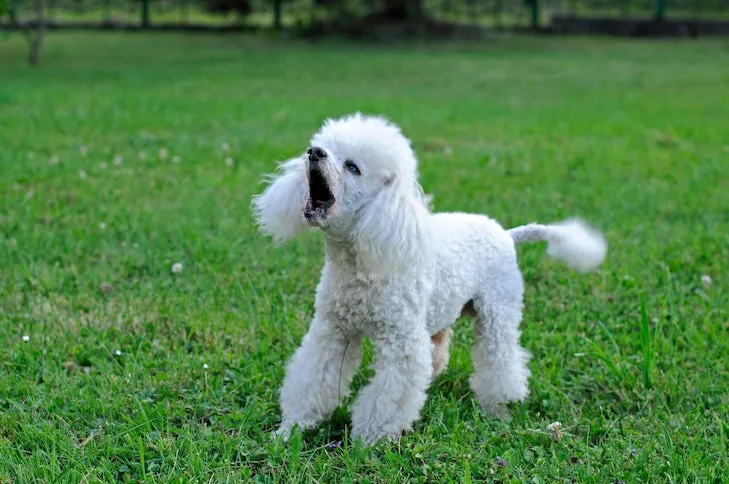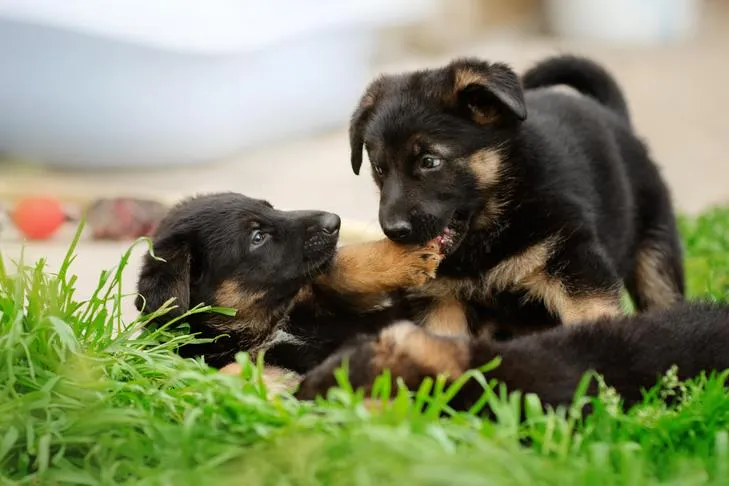Experiencing your dog barking and lunging at the end of their leash is a common, yet concerning, behavior. While it’s easy to quickly label this as aggression, the reality is often more nuanced. Many dogs exhibiting these outbursts are actually displaying reactivity, a state of heightened emotional arousal that can sometimes escalate to aggression. Understanding the root causes of reactivity is the first crucial step in effectively addressing and managing these behaviors to foster a calmer, more confident canine companion. This comprehensive guide will delve into the distinctions between reactivity and aggression, explore their origins, and provide actionable strategies for helping your dog overcome these challenges.
Understanding Dog Reactivity
Reactive dogs are those that respond to ordinary situations with an excessive and disproportionate level of emotional arousal. For instance, while many dogs might show mild curiosity or no reaction to a stranger on a walk, a reactive dog might react with intense barking, lunging, cowering, or frantic pulling on the leash. These reactions are often so overwhelming for the dog that they struggle to calm down or focus on their owner. As anyone who has walked a reactive dog knows, once triggered, typical good manners and loose-leash walking skills can vanish, leaving the owner in a difficult situation.
 Yellow Labrador retriever puppy barking outdoors.
Yellow Labrador retriever puppy barking outdoors.
The Roots of Reactivity in Dogs
While fear is a frequent instigator of reactive behavior, other underlying emotions like frustration or even intense excitement can also play a significant role. The key differentiator is that a reactive dog’s response is both faster and more intense than that of a non-reactive dog. Reactivity can manifest in various settings, including on-leash, off-leash, indoors, and outdoors.
Frustration often arises when a dog’s excitement to greet another dog or a person is blocked by a leash, fence, or other barrier, particularly if they lack sufficient emotional self-control. Conversely, anxious dogs may be reactive due to a lack of proper socialization during their formative puppy stages. Events that might be insignificant to other dogs can become overwhelming for them. Previous negative experiences, such as an attack by another dog, can also foster fear and lead to reactive behaviors later in life. It’s crucial to remember that the perceived threat doesn’t need to be objectively dangerous; it simply needs to be perceived as a threat by the dog for them to exhibit reactive behavior.
If you’re struggling with your dog’s behavior on walks, understanding how to achieve getting your puppy to walk on a leash effectively can be a foundational step in managing their responses.
Defining Aggression in Dogs
Aggression in dogs is characterized by any threatening or harmful behavior aimed at increasing distance from a target, avoiding conflict escalation, or causing harm. While aggression can unfortunately lead to biting, and in severe cases, surrender or euthanasia, it is fundamentally a normal canine behavior. Depending on the context, aggression can be adaptive or appropriate. For instance, a dog defending its home from an intruder might be viewed as courageous and loyal, despite the aggressive nature of the act.
Aggression is an inherent part of a dog’s natural behavioral repertoire and can stem from multiple causes. It’s a complex interplay of genetic and environmental factors, and while often perceived as socially unacceptable, all dogs possess the potential for aggression.

Common Causes of Dog Aggression
Fear is a predominant driver of dog aggression, with many instances involving dogs attempting to create distance from a perceived threat. However, dogs can exhibit aggression for a variety of other reasons:
- Maternal aggression: A mother dog exhibiting extreme protectiveness over her puppies.
- Resource guarding: The dog defends items it perceives as valuable, such as toys or food.
- Territorial aggression: The dog protects areas it considers its domain, like the backyard or a car.
- Protective aggression: The dog guards a specific person, most commonly its owner.
- Pain aggression: A dog experiencing discomfort may defend itself against any touch or movement that could exacerbate its pain.
Factors such as a dog’s age, breed, size, and home environment can influence the manifestation of aggression. Research indicates that older dogs, male dogs, smaller breeds, and dogs without canine companionship may have a higher probability of aggression towards people. Similarly, novice owners and dogs with fearful personalities can also contribute. Certain breeds like Collies, Toy Poodles, and Miniature Schnauzers have been observed to have a higher incidence of aggressive behavior compared to breeds like Labrador Retrievers and Golden Retrievers.
Can Dog Reactivity Lead to Aggression?
The connection between reactivity and aggression is significant. Reactive dogs can indeed become aggressive, depending on the circumstances and their past experiences. Firstly, reactivity places a dog in a heightened emotional state that impairs rational thinking, making them prone to instinctive “fight, flight, or freeze” responses rather than thoughtful actions.
 German Shepherd puppies wrestling in the grass.
German Shepherd puppies wrestling in the grass.
Secondly, reactive dogs, especially those whose reactivity is fear-based, can learn that aggression achieves their desired outcome. For example, if a dog growls at a stranger and the stranger doesn’t move away, the dog may learn to escalate to snapping or biting to create distance. The primary goal of reactive behavior is often to increase the space between the dog and the perceived threat. It’s important to recognize that even if a dog is currently exhibiting reactive behaviors without having caused harm, these actions can evolve into defensive aggression over time, particularly if their attempts to create distance are repeatedly unsuccessful. This escalation can occur gradually or even within a single interaction.
Addressing underlying issues like house training can also contribute to a calmer environment at home, reducing overall stress. If you’re facing challenges with your puppy’s bathroom habits, explore puppy potty training tips and tricks or learn how can I teach my dog to poop outside.
Strategies for Managing Dog Reactivity
Recognizing and addressing reactivity is crucial, not only for your dog’s well-being but also to prevent it from escalating into aggression. While early socialization and positive exposure are key preventive measures, managing existing reactivity requires a dedicated approach.
It’s essential to first rule out any underlying medical conditions with your veterinarian that might be contributing to your dog’s behavior. Following this, seeking guidance from a qualified professional, such as a certified behavior consultant or a veterinary behaviorist, is highly recommended.
A structured three-step program can be highly effective:
- Practice Management: This involves actively avoiding situations that tend to trigger your dog’s reactivity. This might mean adjusting your walking schedule to quieter times or avoiding crowded areas. The goal is to prevent your dog from practicing reactive behaviors and experiencing the negative emotions associated with them.
- Implement a Positive Reinforcement Training Program: This typically includes behavior modification techniques like desensitization and counterconditioning. For instance, instead of allowing your dog to fixate on a trigger in the distance, you can teach them an incompatible behavior, such as focusing on you with a “watch me” command. Teaching your dog to disengage from a trigger can be a powerful tool.
- Learn to Read Dog Body Language: Becoming attuned to subtle cues like lip-licking, yawning, or ear pinning can alert you to your dog’s emotional state before they become overwhelmed. Recognizing these early signs allows you to intervene and redirect your dog, preventing a full-blown reactive episode.
In some cases, medication prescribed by a veterinarian can also be a valuable tool to help calm your dog, making them more receptive to learning and implementing new behavioral patterns. Through consistent application of these strategies, your dog can gradually develop new emotional associations with their triggers, leading to a significant reduction in reactivity. For those looking to train a service dog for emotional support, understanding these principles is also foundational, as detailed in train your own service dog for anxiety.
Conclusion
Effectively addressing dog aggression and reactivity requires patience, consistency, and a deep understanding of canine behavior. By distinguishing between reactivity and aggression, identifying their root causes, and implementing management and training strategies, you can guide your dog towards a calmer, more balanced life. If you’re seeking professional assistance or further guidance on specific training challenges, don’t hesitate to reach out to qualified dog trainers or behavior consultants.
References
- American Kennel Club. (n.d.). Excessive Dog Barking: Causes and How to Stop It. Retrieved from https://www.akc.org/expert-advice/training/excessive-dog-barking-causes-stop/
- American Kennel Club. (n.d.). Managing Your Dog’s Lunging on Leash. Retrieved from https://www.akc.org/expert-advice/training/managing-your-dog-lunging-on-leash/
- American Kennel Club. (n.d.). Common Fears and Phobias in Dogs. Retrieved from https://www.akc.org/expert-advice/training/common-fears-and-phobias-in-dogs/
- American Kennel Club. (n.d.). Problem Solving Excitement in Your Dog. Retrieved from https://www.akc.org/expert-advice/lifestyle/excitement-problem-solving/
- American Kennel Club. (n.d.). Dog-to-Dog Greetings: When Your Dog Doesn’t Need to Say Hi. Retrieved from https://www.akc.org/expert-advice/training/dog-dog-greetings-dog-doesnt-need-say-hi/
- American Kennel Club. (n.d.). Teaching Your Pup Self-Control. Retrieved from https://www.akc.org/expert-advice/training/teaching-your-pup-self-control/
- American Kennel Club. (n.d.). Treating Dog Anxiety. Retrieved from https://www.akc.org/expert-advice/health/treating-dog-anxiety/
- American Kennel Club. (n.d.). Puppy Socialization. Retrieved from https://www.akc.org/expert-advice/training/puppy-socialization/
- American Kennel Club. (n.d.). Canine Mother Separation From Puppies. Retrieved from https://www.akc.org/expert-advice/dog-breeding/canine-mother-separation-from-puppies/
- American Kennel Club. (n.d.). Resource Guarding in Dogs. Retrieved from https://www.akc.org/expert-advice/training/resource-guarding-in-dogs/
- American Kennel Club. (n.d.). How to Tell When Your Dog is in Pain. Retrieved from https://www.akc.org/expert-advice/health/how-to-tell-when-dog-is-in-pain/
- American Kennel Club. (n.d.). Study Uncovers Factors Behind Dog Aggression. Retrieved from https://www.akc.org/expert-advice/training/study-uncovers-factors-behind-dog-aggression/
- American Kennel Club. (n.d.). Collie (Rough) Dog Breed Information. Retrieved from https://www.akc.org/dog-breeds/collie/
- American Kennel Club. (n.d.). Poodle (Toy) Dog Breed Information. Retrieved from https://www.akc.org/dog-breeds/poodle-toy/
- American Kennel Club. (n.d.). Miniature Schnauzer Dog Breed Information. Retrieved from https://www.akc.org/dog-breeds/miniature-schnauzer/
- American Kennel Club. (n.d.). Labrador Retriever Dog Breed Information. Retrieved from https://www.akc.org/dog-breeds/labrador-retriever/
- American Kennel Club. (n.d.). Golden Retriever Dog Breed Information. Retrieved from https://www.akc.org/dog-breeds/golden-retriever/
- American Kennel Club. (n.d.). Lapponian Herder Dog Breed Information. Retrieved from https://www.akc.org/dog-breeds/lapponian-herder/
- American Kennel Club. (n.d.). Why Dogs Growl and How to Handle It. Retrieved from https://www.akc.org/expert-advice/training/why-dogs-growl-and-how-to-handle-it/
- American Kennel Club. (n.d.). Certified Dog Behavior Consultant. Retrieved from https://www.ccpdt.org/certification/dog-behavior-consultant/
- American Kennel Club. (n.d.). Changing Your Dog’s Behavior with Desensitization and Counter-Conditioning. Retrieved from https://www.akc.org/expert-advice/training/changing-your-dogs-behavior-with-desensitization-and-counter-conditioning/
- American Kennel Club. (n.d.). Watch Me Command: Grab Your Dog’s Attention. Retrieved from https://www.akc.org/expert-advice/training/watch-me-command-grab-dogs-attention/
- American Kennel Club. (n.d.). How to Read Dog Body Language. Retrieved from https://www.akc.org/expert-advice/advice/how-to-read-dog-body-language/
- Merck Veterinary Manual. (n.d.). Behavior Problems in Dogs. Retrieved from https://www.merckvetmanual.com/dog-owners/behavior-of-dogs/behavior-problems-in-dogs
- Nature. (2021). Study Uncovers Factors Behind Dog Aggression. Retrieved from https://www.nature.com/articles/s41598-021-88793-5
